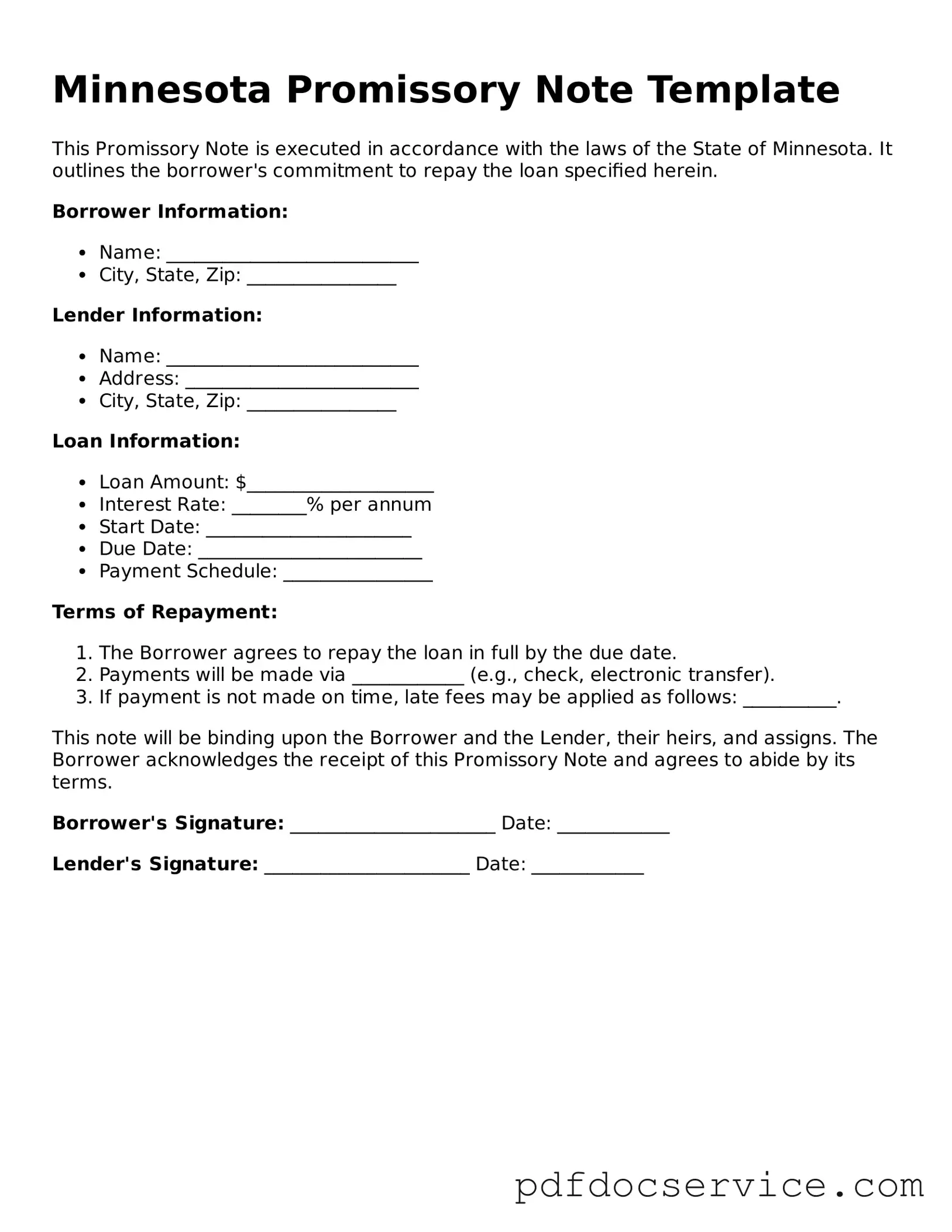What is a Minnesota Promissory Note?
A Minnesota Promissory Note is a written agreement where one party promises to pay a specific amount of money to another party at a defined time or on demand. This document outlines the terms of the loan, including the interest rate, payment schedule, and consequences for defaulting on the loan.
Who needs a Promissory Note?
Anyone who lends money can benefit from a Promissory Note. This includes individuals, businesses, or organizations. It provides legal protection and clarity for both the lender and the borrower, ensuring everyone understands the terms of the loan.
Key information to include in a Promissory Note consists of:
-
The names and addresses of both the lender and borrower
-
The principal amount of the loan
-
The interest rate, if applicable
-
The repayment schedule (due dates, installment amounts)
-
Any late fees or penalties for missed payments
-
Signatures of both parties
Is a Promissory Note legally binding?
Yes, a Promissory Note is a legally binding document. Once signed by both parties, it can be enforced in court if the borrower fails to repay the loan as agreed. It’s important to ensure that all terms are clear and agreed upon to avoid disputes later.
Can a Promissory Note be modified?
Yes, a Promissory Note can be modified if both parties agree to the changes. It’s best to document any modifications in writing and have both parties sign the updated agreement. This helps maintain clarity and legal standing.
What happens if the borrower defaults on the loan?
If the borrower defaults, the lender may take several actions, including:
-
Contacting the borrower to discuss the missed payments
-
Charging late fees as specified in the note
-
Taking legal action to recover the owed amount
It’s crucial for both parties to understand the consequences outlined in the Promissory Note.
Do I need a lawyer to create a Promissory Note?
No, you do not need a lawyer to create a Promissory Note. However, having legal assistance can help ensure that the document meets all legal requirements and protects your interests. Many templates are available online for those who prefer to create the document themselves.
Where can I find a Minnesota Promissory Note template?
Templates for Minnesota Promissory Notes can be found online on various legal websites. Additionally, local office supply stores may offer printed forms. Ensure that any template used complies with Minnesota laws and includes all necessary information.
